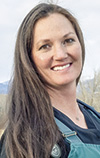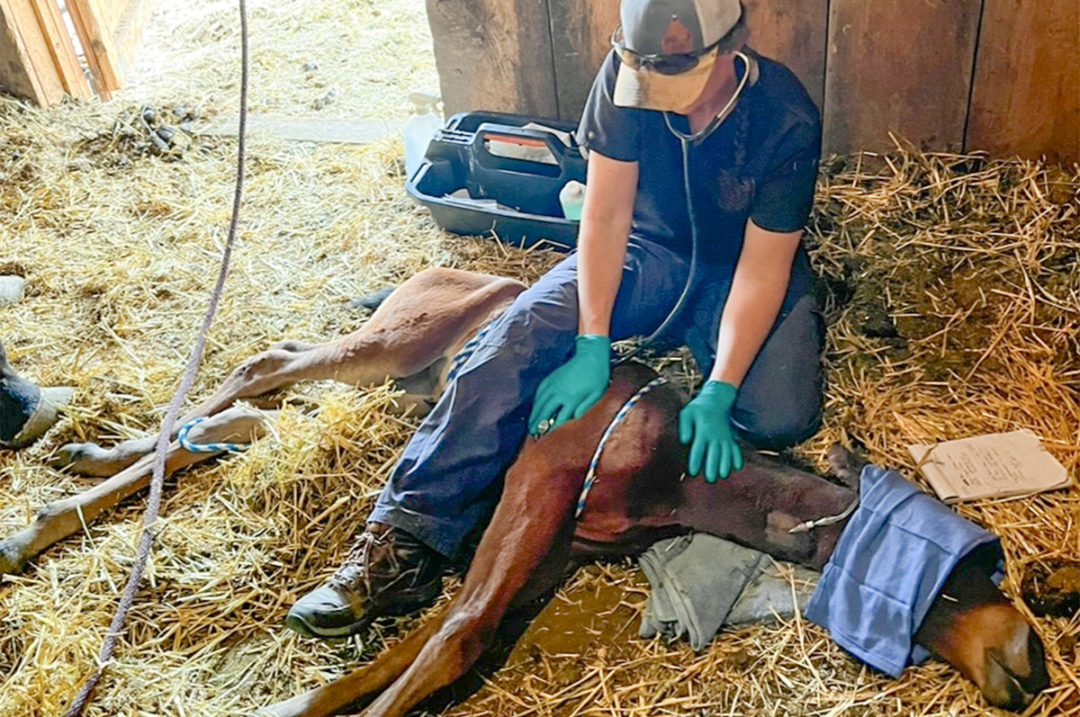 Dr. Paul Tew, a mixed-animal veterinarian in Rexburg, Idaho, is 71 years old. He’s been seeking retirement for several years now. So far, it’s been out of reach.
Dr. Paul Tew, a mixed-animal veterinarian in Rexburg, Idaho, is 71 years old. He’s been seeking retirement for several years now. So far, it’s been out of reach.
Although Tew has placed ads in veterinary magazines, college campuses and used his network to its extent, the 43-year practicing vet can’t seem to find anyone to buy into his well-established business. Upper Valley Veterinary Clinic has loyal clients; it’s in a great location on the developing side of a booming college town. It comes with a trained clinic team, a business partner vet and a full-time employee vet – both are young with full careers ahead of them.
But no takers so far.
Tew’s situation comes as no surprise to Idaho State Veterinarian Dr. Scott Leibsle, who says, anecdotally, around 50% of the vets who are writing large-animal health certificates are within 10 years of retirement.
“Once you get out into the rural areas of Idaho, it is very difficult for livestock owners to find a large-animal vet that will make a farm call, but sometimes you can’t even find someone within an hour or two that will see your animals, even if you take them there. This has been building for a while, and we need to find some different ways to recruit large-animal veterinarians to the rural parts of Idaho,” Leibsle explains.
Diagnosis
 “The problem is multifactorial,” says Dr. Sara Chaplin, associate veterinarian for Mountain River Veterinary Hospital.
“The problem is multifactorial,” says Dr. Sara Chaplin, associate veterinarian for Mountain River Veterinary Hospital.
Chaplin is based in Salmon, Idaho, and fulfills a satellite large-animal veterinary position for Mountain River, located in Rigby, Idaho. She is a solo practitioner serving the livestock owners of Salmon and its surrounding areas. She has a small building to house equipment and supplies, but does the majority of her work out of her mobile vet truck and uses an assistant or vet tech regularly.
To understand the large-animal vet shortage problem fully, she says, we have to take a look at the demographics of vet students entering and graduating from school. Agriculture represents around 2% of the population.
“That’s going to be reflected in any professional program with a large group of individuals,” Chaplin says. “And then, there are a lot of amenities that you have to do without when you live a rural lifestyle.”
Especially as a solo practitioner, but even within a group practice, managing “on-call” time becomes labor intensive and emotionally exhaustive, explains Chaplin.
“I'm just on call 24/7, 365.”
She says the most frequently lamented hurdle discussed among her colleagues is the need to be perpetually available to their clients. Chaplin is a young mother of two. She says she doesn’t know what part of Murphy’s Law plays a role in veterinary medicine, but it seems to never fail that when she has made plans with her family, she will get called out. When she has no plans, she’ll have a quiet day at home.
Chaplin may smile when she discusses Murphy’s Law, but she’s serious when she says her family comes first. However, putting family first is easier said than done.
“The most challenging part about it is, if you are in the rare situation where you have to tell somebody ‘No,’ the emotional toll that it takes on you stays with you longer than if you’d just gone and done it,” she says.
Then, there’s the elephant in the waiting room: salary.
The average veterinary school debt total for graduating students settles between $100,000 and $200,000 but can creep as high as $400,000.
Rural medicine starting salary is going to be substantially less than urban, small-animal medicine, says Chaplin.
“There’s not a set cap on what we can charge. But I work for ranchers, and their cost of inputs is exceptional, as well, so you could price yourself out of being an asset to the operation pretty quickly.”
According to Tew, the COVID-19 pandemic inflamed what had been a slow, steady burnout of rural veterinarians.
“People bought more dogs and cats and horses, so the demand for vet services has gone way up on the pet end. That’s left us short on the cattle end, on the farm end.”
Treatment
 According to Leibsle, the state of Idaho has been proactively working to bring veterinarians here for many decades. The Washington-Idaho-Montana-Utah Regional Program in Veterinary Medicine allows 11 Idaho residents to attend the Washington State University vet school for in-state tuition.
According to Leibsle, the state of Idaho has been proactively working to bring veterinarians here for many decades. The Washington-Idaho-Montana-Utah Regional Program in Veterinary Medicine allows 11 Idaho residents to attend the Washington State University vet school for in-state tuition.
Additionally, the National Institute of Food and Health offers a grant program to veterinarians willing to work in underserved areas. Idaho currently has seven grants. A nominated and approved veterinarian will have $75,000 deducted from their loan debt if they practice in that location for at least three years.
“This last year, we had two people renew from a previous year, and then we had five new awards given to veterinarians practicing on large animals in rural parts of the state, which is absolutely fantastic!” says Leibsle.
As for Chaplin, she’s an ideal example of Idaho values and lifestyle luring a talented practitioner to the state. Chaplin grew up on a cow-calf operation in New Mexico. After vet school at Colorado State University, she spent time as a dairy veterinarian in California. She loved her experience there, but ultimately, it was the Idaho way of thinking that drew her young family to Salmon.
What has kept her here when she could make more money and work fewer hours somewhere else?
Her answer: her clients.
“I'm fortunate. I have a lot of really good clients that I really value and that communicate to me that they value the role that I play in their operations. And I’m really appreciative of that because it helps to fuel you to stay in an area.”
Just like the problem, the answer is multipronged, but all three veterinarians agree, an appreciative, understanding and loyal clientele that uses veterinary care on a routine basis might be the best way to attract and retain large-animal veterinarians in your area.
If you have a veterinarian in your contact list, make it a priority to appreciate them.
If you don’t have a vet you can count on, start working on the problem from the ground up. Here’s a tip: People who are used to rural lifestyles are more likely to want to come back to one.
We can do this, Idaho, so let’s get going.




.jpg?t=1687979285&width=640)
.jpg?height=auto&t=1713304395&width=285)


